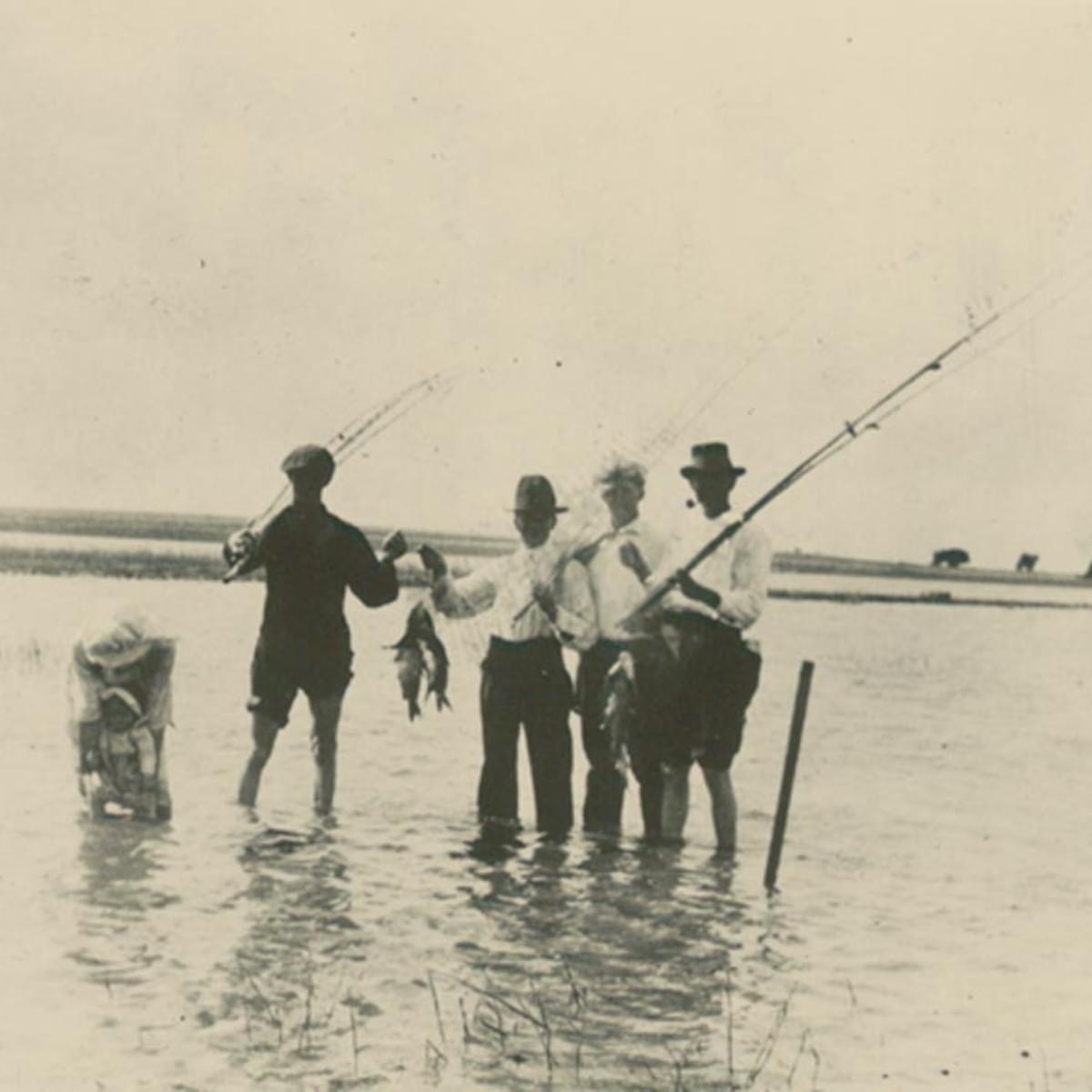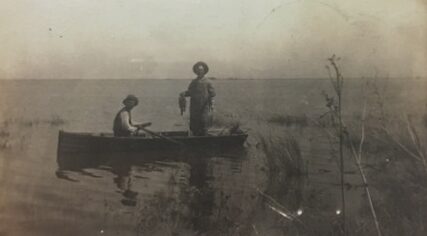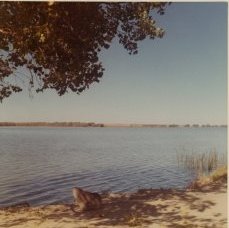Scout troops, fishermen, hunters, boating enthusiasts and other adventure seekers flocked to the shores of Lake McKinney for nearly 70 years, but what once was the largest man-made reservoir in Kansas has been closed to the public since 1978. Located just 2 ½ miles east of Lakin, Lake McKinney was born out of a need for “sure” water to grow sugar beets. The crop was already thriving in the Deerfield and Lakin areas when a group of wealthy Colorado capitalists and Garden City businessmen became interested in expanding into Finney County and increasing the amount of sugar beets grown here. The group was incorporated in 1905 as the United States Sugar And Land Company. Since sugar beets require large amounts of water, the group purchased the Great Eastern Ditch System and 12,000 acres of land along the ditch in Finney and Kearny counties. Completed in February 1907, the lake covered roughly 3,000 acres of land and held over 30,000 acre feet of water. Lake McKinney was fed by Arkansas River water through the Great Eastern Canal from the headgates at Hartland, and water was held at the lake until needed for irrigation. When lawsuits against the ditch company and flood damage forced them to abandon the western section of the ditch, water was carried to the lake through the Amazon Canal. Named for J. R. McKinney who was treasurer of US Sugar And Land, Lake McKinney was also known simply as the reservoir or Reservoir #5.
The construction of the reservoir was not without controversy. Lake McKinney covered ground that was formerly occupied by farms. Some of the land had been abandoned, but other farmers did not sell willingly. Their land was taken from them which led to lawsuits against the Sugar And Land Company. In Volume II of the History of Kearny County, Irene Frazer Boughton reminisced about her first glimpse of Lake McKinney as a five-year-old, “The lake must have been in the filling stages for I saw great cottonwoods turning yellow as they stood in the water clear up to their branches—some were almost submerged.” The image of a large two-story white home standing in the lake with water almost to its second story remained vivid in her mind many moons later. By August of 1907, newspapers reported that the water in the reservoir was 27 feet deep and sufficient to irrigate thousands of acres, and Lake McKinney became a popular recreation spot from the time it was filled.
The United States Sugar And Land Company; however, faced bond foreclosures which wiped out many stockholders. The original company name lasted from 1905 thru 1913. The company then became Garden City Sugar And Land Company. The next foreclosure came in 1920, and the name was changed to Garden City Company. Since the last foreclosure in 1930, the company has been known as The Garden City Company.
The Kansas Forestry, Fish and Game Commission leased the lake from the Garden City Company in 1947 to provide Kansans and tourists with additional fishing and hunting opportunities. The original lease cost $10, and the Garden City Company retained the water rights. The Fish and Game Commission agreed to build access roads and stock the lake, and the Lake McKinney Improvement Association formed in the 1950s and enhanced the lake with picnic tables, a well house, docks and ramps, and concessions. The LMIA also built and maintained camping areas with all the improvements being funded through dues-paying members. While some maps still showed the body of water as Lake McKinney, others referred to it as the Kearny County State Lake.
The lake grew in recreational importance as it lessened in agricultural importance. A 1967 Garden City Telegram article reported that there had been as many as 60-70 boats on the water at one time that summer and that membership in the LMIA was at an all-time high. At its peak, the organization had about 200 dues-paying members.
Ultimately a lake is only a lake if there is water, and that was something that outdoorsmen could not rely on. The reservoir went dry more than once and experienced several periods of low water levels caused by drought conditions, irrigation demands, and the operation of the John Martin and Pueblo reservoirs in Colorado which reduced the amount of water flowing in the Arkansas River. The lake was dry for most of the 70s, and tensions were at an all-time high. Kansas and Colorado had long battled over water rights. Some LMIA members argued that the Fish and Game Commission was not doing enough. LMIA rules were such that when there was no water to retain the membership, members didn’t pay. With a dried-out lake, there was no income from dues, but the association claimed the commission still expected the organization to maintain everything.
“The association has a sublease from us for $1 per year,” said Walter Harrison, then chief of Fish and Game field services, “but it always surprises them when we wonder why they don’t do what their contract calls for. We build and maintain the access roads, but we have to get approval from The Garden City Company for any improvements.” Justifying large expenditures on a lake that was privately owned was also a roadblock for the State.
In 1977, The Garden City Company, announced that the land was too important to let it stand idle. The company converted 1,800 acres of the reservoir to cropland, cleared much of the timber and brush, and constructed dikes in the lakebed to control water movement leaving approximately 1,050 acres in the middle of the lake for irrigation storage which was still leased to the Fish and Game Commission. The area included waterfowl resting islands and refuge. The conversion of the lake virtually halted public hunting and fishing opportunities. The Kansas Fish and Game Commission terminated its agreement in 1978, and the reservoir was closed to the public.
SOURCES: The Lake That Disappeared by Barbara Oringderff; Lake McKinney’s Start Marked by Happiness, Tragedy by Barbara Oringderff; A Brief History of “The Garden City Company” & “Sugar Factory” by W. F. Stoeckly; History of Kearny County Vols. I & II; Kansas State Historical Society; and archives of The Advocate, Lakin Independent, Topeka Daily Capital, Wichita Eagle, Kansas Farmer and Mail and Breeze, Garden City Telegram, The Waverly Gazette, and Marshall County News








